Organizational Behavior: Motivation Theories Evaluation
VerifiedAdded on 2020/02/24
|6
|1381
|138
Essay
AI Summary
This essay critically evaluates the contributions and limitations of content and process theories of motivation within contemporary organizations. It begins by defining motivation and introducing the two primary theoretical approaches: content theories (need theories) and process theories. The essay delves into content theories, exploring Maslow's hierarchy of needs and Herzberg's two-factor theory, highlighting their contributions to understanding employee needs and satisfaction, while also acknowledging their limitations, such as the lack of universal applicability and the difficulty in predicting individual behavior. The essay then examines process theories, including reinforcement theory, Vroom's expectancy theory, goal-setting theory, and equity theory, discussing their role in directing and changing employee behavior. It acknowledges the criticisms of process theories, such as increased organizational complexities. The essay emphasizes the importance of considering both internal and external reward systems and individual differences when applying these theories. The conclusion summarizes the importance of both content and process theories for organizational success, while also stressing the need to consider their limitations and make necessary adjustments.
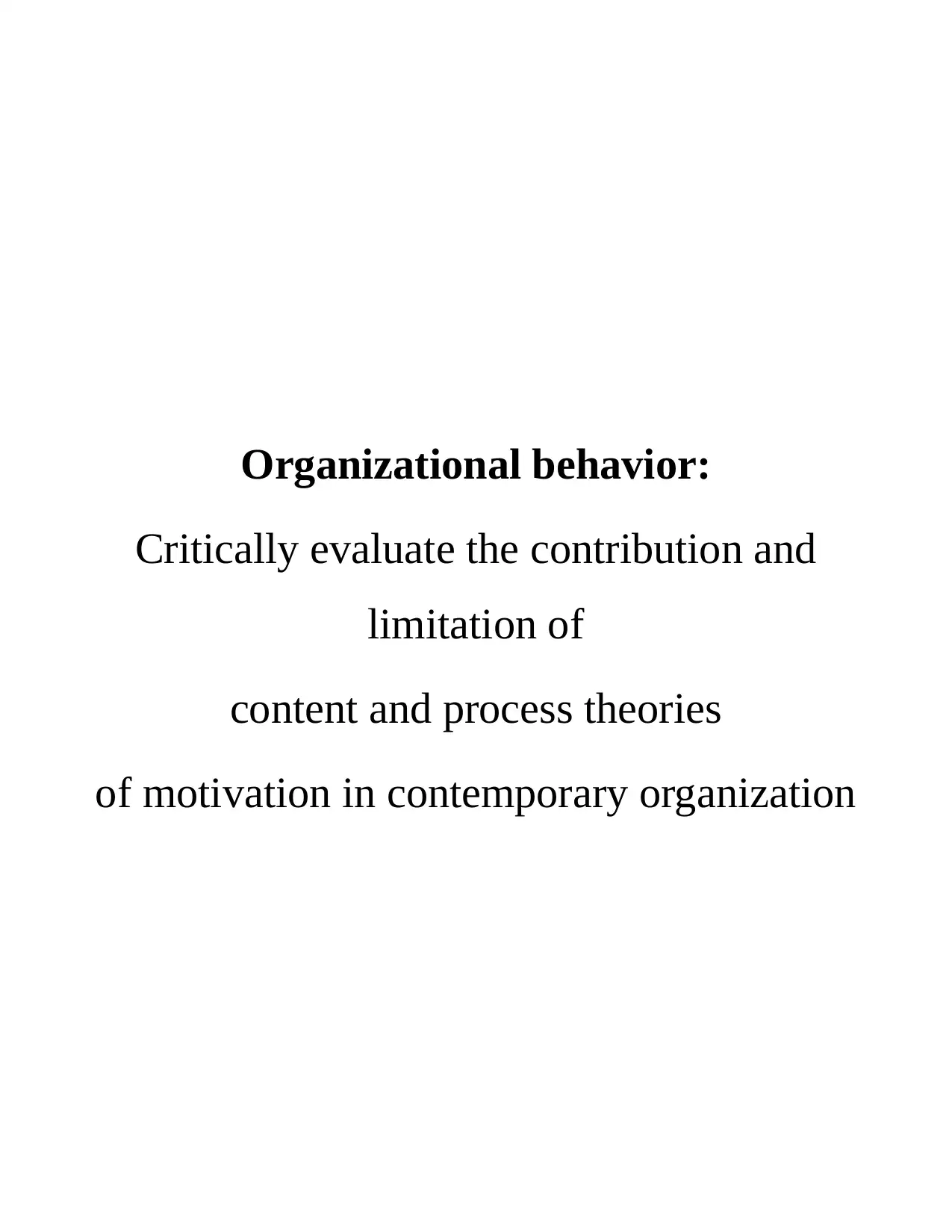
Organizational behavior:
Critically evaluate the contribution and
limitation of
content and process theories
of motivation in contemporary organization
Critically evaluate the contribution and
limitation of
content and process theories
of motivation in contemporary organization
Paraphrase This Document
Need a fresh take? Get an instant paraphrase of this document with our AI Paraphraser
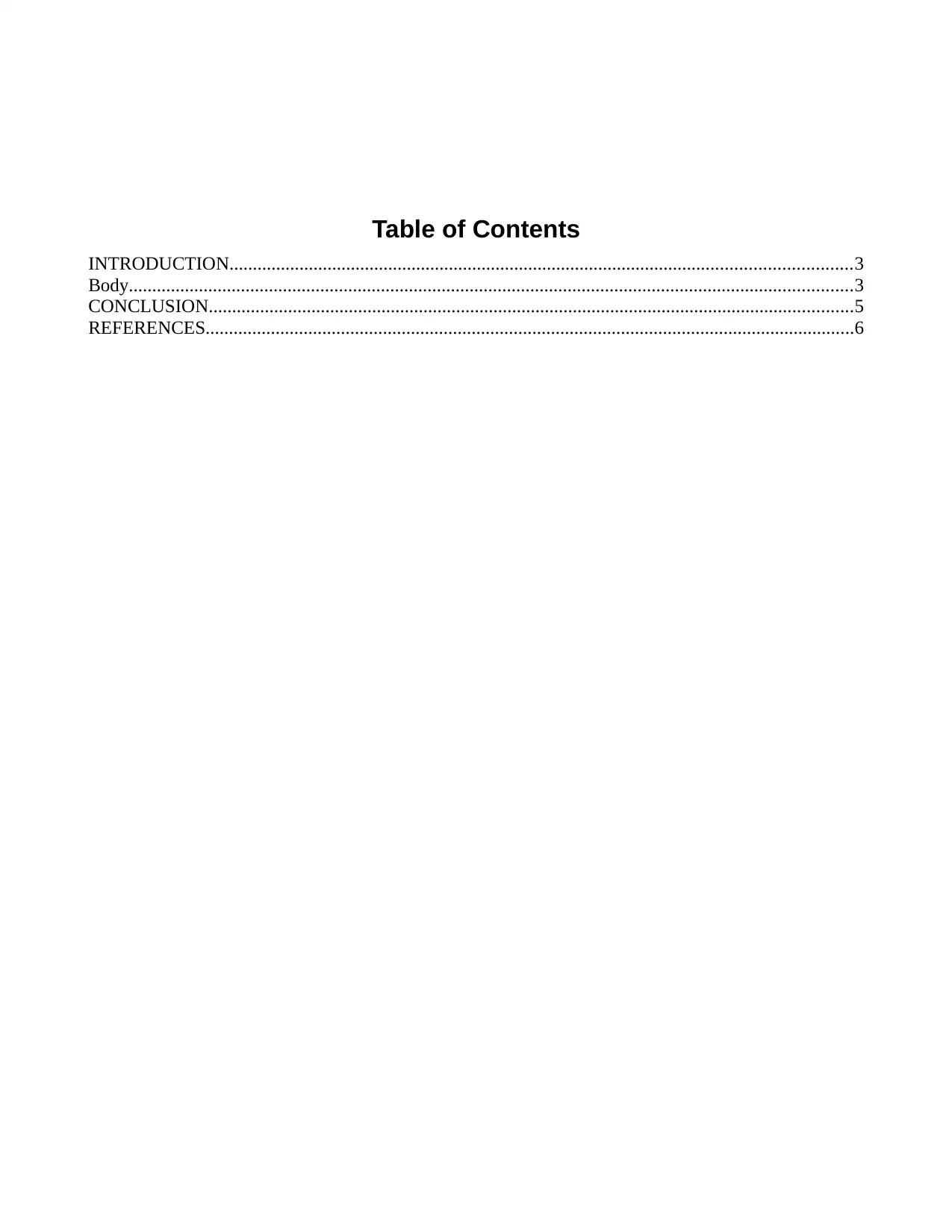
Table of Contents
INTRODUCTION.....................................................................................................................................3
Body...........................................................................................................................................................3
CONCLUSION..........................................................................................................................................5
REFERENCES...........................................................................................................................................6
INTRODUCTION.....................................................................................................................................3
Body...........................................................................................................................................................3
CONCLUSION..........................................................................................................................................5
REFERENCES...........................................................................................................................................6
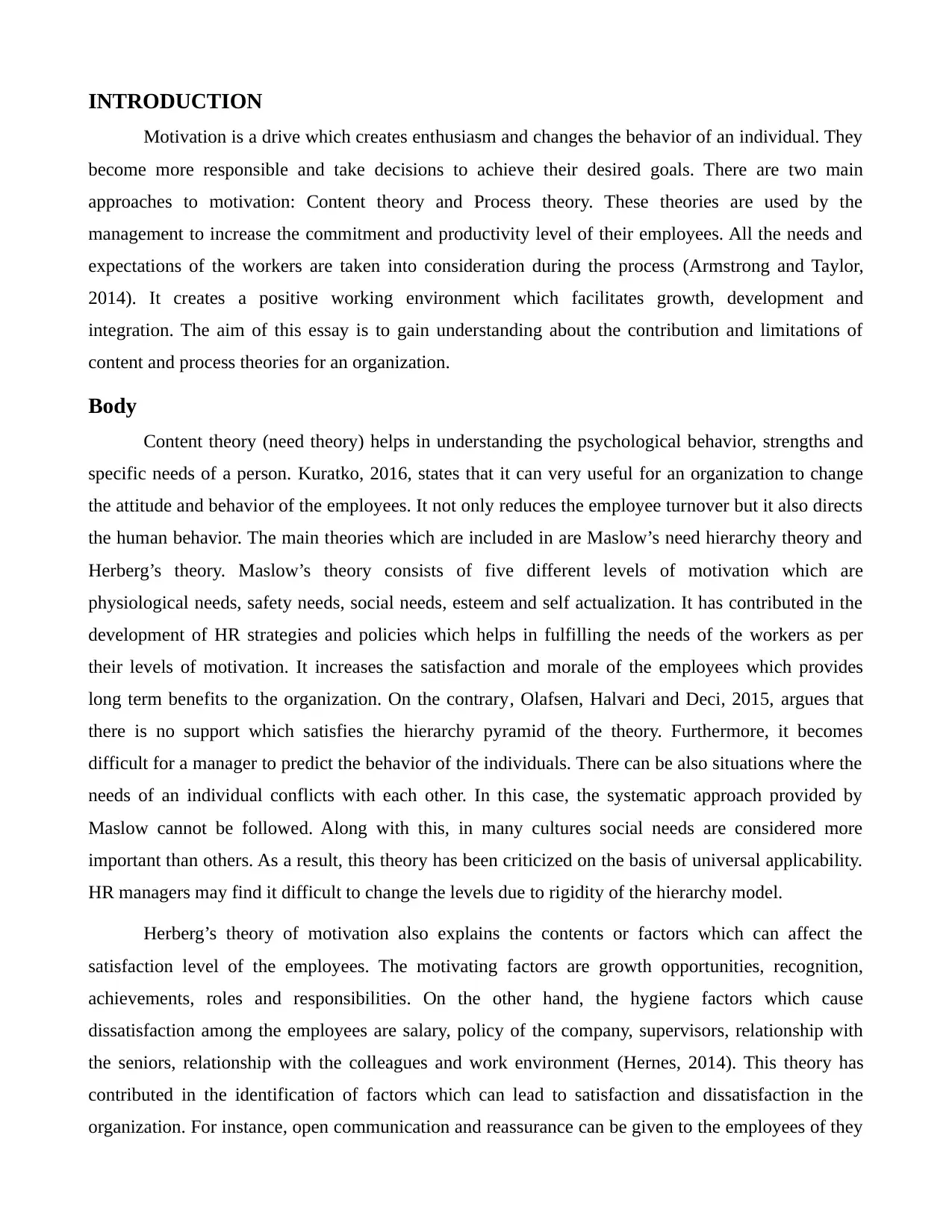
INTRODUCTION
Motivation is a drive which creates enthusiasm and changes the behavior of an individual. They
become more responsible and take decisions to achieve their desired goals. There are two main
approaches to motivation: Content theory and Process theory. These theories are used by the
management to increase the commitment and productivity level of their employees. All the needs and
expectations of the workers are taken into consideration during the process (Armstrong and Taylor,
2014). It creates a positive working environment which facilitates growth, development and
integration. The aim of this essay is to gain understanding about the contribution and limitations of
content and process theories for an organization.
Body
Content theory (need theory) helps in understanding the psychological behavior, strengths and
specific needs of a person. Kuratko, 2016, states that it can very useful for an organization to change
the attitude and behavior of the employees. It not only reduces the employee turnover but it also directs
the human behavior. The main theories which are included in are Maslow’s need hierarchy theory and
Herberg’s theory. Maslow’s theory consists of five different levels of motivation which are
physiological needs, safety needs, social needs, esteem and self actualization. It has contributed in the
development of HR strategies and policies which helps in fulfilling the needs of the workers as per
their levels of motivation. It increases the satisfaction and morale of the employees which provides
long term benefits to the organization. On the contrary, Olafsen, Halvari and Deci, 2015, argues that
there is no support which satisfies the hierarchy pyramid of the theory. Furthermore, it becomes
difficult for a manager to predict the behavior of the individuals. There can be also situations where the
needs of an individual conflicts with each other. In this case, the systematic approach provided by
Maslow cannot be followed. Along with this, in many cultures social needs are considered more
important than others. As a result, this theory has been criticized on the basis of universal applicability.
HR managers may find it difficult to change the levels due to rigidity of the hierarchy model.
Herberg’s theory of motivation also explains the contents or factors which can affect the
satisfaction level of the employees. The motivating factors are growth opportunities, recognition,
achievements, roles and responsibilities. On the other hand, the hygiene factors which cause
dissatisfaction among the employees are salary, policy of the company, supervisors, relationship with
the seniors, relationship with the colleagues and work environment (Hernes, 2014). This theory has
contributed in the identification of factors which can lead to satisfaction and dissatisfaction in the
organization. For instance, open communication and reassurance can be given to the employees of they
Motivation is a drive which creates enthusiasm and changes the behavior of an individual. They
become more responsible and take decisions to achieve their desired goals. There are two main
approaches to motivation: Content theory and Process theory. These theories are used by the
management to increase the commitment and productivity level of their employees. All the needs and
expectations of the workers are taken into consideration during the process (Armstrong and Taylor,
2014). It creates a positive working environment which facilitates growth, development and
integration. The aim of this essay is to gain understanding about the contribution and limitations of
content and process theories for an organization.
Body
Content theory (need theory) helps in understanding the psychological behavior, strengths and
specific needs of a person. Kuratko, 2016, states that it can very useful for an organization to change
the attitude and behavior of the employees. It not only reduces the employee turnover but it also directs
the human behavior. The main theories which are included in are Maslow’s need hierarchy theory and
Herberg’s theory. Maslow’s theory consists of five different levels of motivation which are
physiological needs, safety needs, social needs, esteem and self actualization. It has contributed in the
development of HR strategies and policies which helps in fulfilling the needs of the workers as per
their levels of motivation. It increases the satisfaction and morale of the employees which provides
long term benefits to the organization. On the contrary, Olafsen, Halvari and Deci, 2015, argues that
there is no support which satisfies the hierarchy pyramid of the theory. Furthermore, it becomes
difficult for a manager to predict the behavior of the individuals. There can be also situations where the
needs of an individual conflicts with each other. In this case, the systematic approach provided by
Maslow cannot be followed. Along with this, in many cultures social needs are considered more
important than others. As a result, this theory has been criticized on the basis of universal applicability.
HR managers may find it difficult to change the levels due to rigidity of the hierarchy model.
Herberg’s theory of motivation also explains the contents or factors which can affect the
satisfaction level of the employees. The motivating factors are growth opportunities, recognition,
achievements, roles and responsibilities. On the other hand, the hygiene factors which cause
dissatisfaction among the employees are salary, policy of the company, supervisors, relationship with
the seniors, relationship with the colleagues and work environment (Hernes, 2014). This theory has
contributed in the identification of factors which can lead to satisfaction and dissatisfaction in the
organization. For instance, open communication and reassurance can be given to the employees of they
⊘ This is a preview!⊘
Do you want full access?
Subscribe today to unlock all pages.

Trusted by 1+ million students worldwide
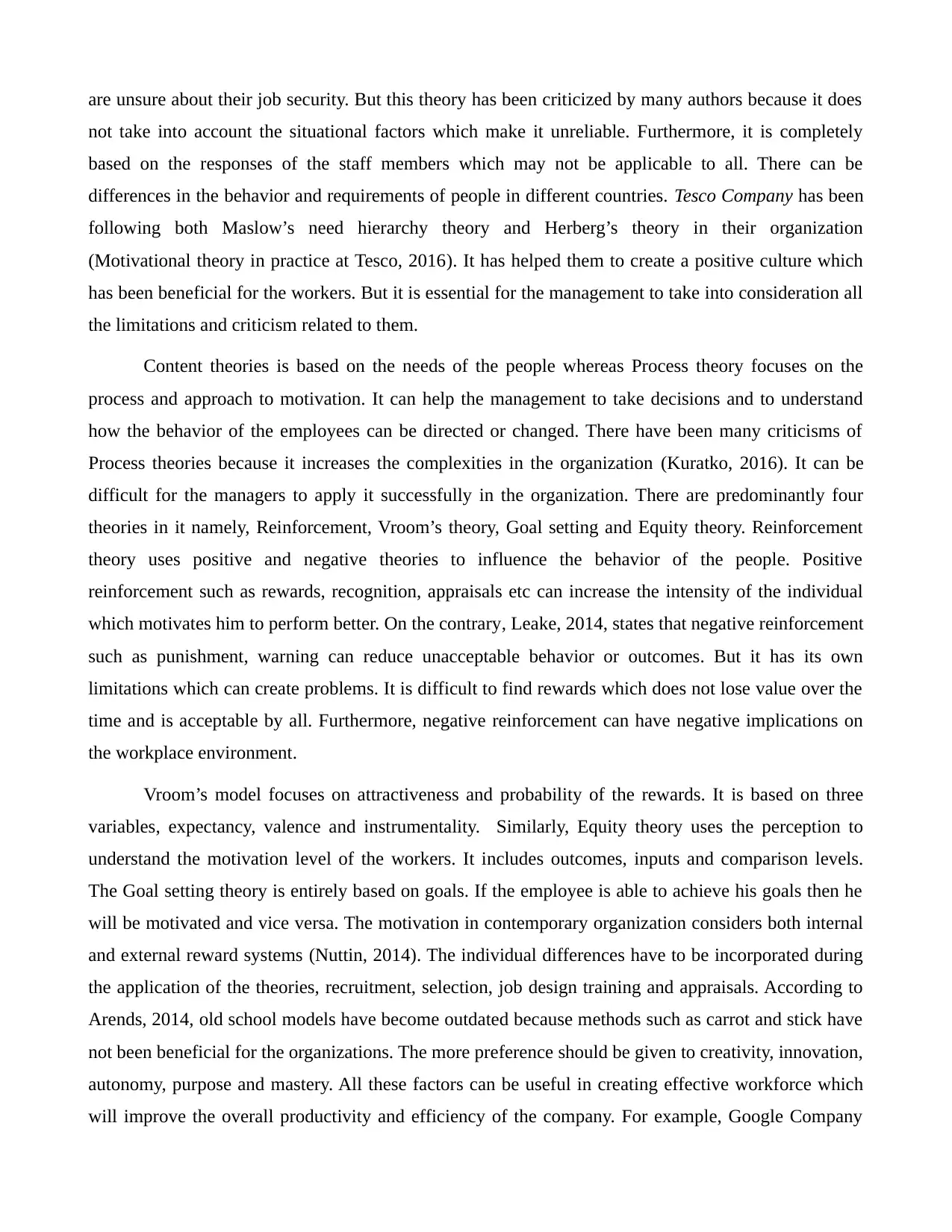
are unsure about their job security. But this theory has been criticized by many authors because it does
not take into account the situational factors which make it unreliable. Furthermore, it is completely
based on the responses of the staff members which may not be applicable to all. There can be
differences in the behavior and requirements of people in different countries. Tesco Company has been
following both Maslow’s need hierarchy theory and Herberg’s theory in their organization
(Motivational theory in practice at Tesco, 2016). It has helped them to create a positive culture which
has been beneficial for the workers. But it is essential for the management to take into consideration all
the limitations and criticism related to them.
Content theories is based on the needs of the people whereas Process theory focuses on the
process and approach to motivation. It can help the management to take decisions and to understand
how the behavior of the employees can be directed or changed. There have been many criticisms of
Process theories because it increases the complexities in the organization (Kuratko, 2016). It can be
difficult for the managers to apply it successfully in the organization. There are predominantly four
theories in it namely, Reinforcement, Vroom’s theory, Goal setting and Equity theory. Reinforcement
theory uses positive and negative theories to influence the behavior of the people. Positive
reinforcement such as rewards, recognition, appraisals etc can increase the intensity of the individual
which motivates him to perform better. On the contrary, Leake, 2014, states that negative reinforcement
such as punishment, warning can reduce unacceptable behavior or outcomes. But it has its own
limitations which can create problems. It is difficult to find rewards which does not lose value over the
time and is acceptable by all. Furthermore, negative reinforcement can have negative implications on
the workplace environment.
Vroom’s model focuses on attractiveness and probability of the rewards. It is based on three
variables, expectancy, valence and instrumentality. Similarly, Equity theory uses the perception to
understand the motivation level of the workers. It includes outcomes, inputs and comparison levels.
The Goal setting theory is entirely based on goals. If the employee is able to achieve his goals then he
will be motivated and vice versa. The motivation in contemporary organization considers both internal
and external reward systems (Nuttin, 2014). The individual differences have to be incorporated during
the application of the theories, recruitment, selection, job design training and appraisals. According to
Arends, 2014, old school models have become outdated because methods such as carrot and stick have
not been beneficial for the organizations. The more preference should be given to creativity, innovation,
autonomy, purpose and mastery. All these factors can be useful in creating effective workforce which
will improve the overall productivity and efficiency of the company. For example, Google Company
not take into account the situational factors which make it unreliable. Furthermore, it is completely
based on the responses of the staff members which may not be applicable to all. There can be
differences in the behavior and requirements of people in different countries. Tesco Company has been
following both Maslow’s need hierarchy theory and Herberg’s theory in their organization
(Motivational theory in practice at Tesco, 2016). It has helped them to create a positive culture which
has been beneficial for the workers. But it is essential for the management to take into consideration all
the limitations and criticism related to them.
Content theories is based on the needs of the people whereas Process theory focuses on the
process and approach to motivation. It can help the management to take decisions and to understand
how the behavior of the employees can be directed or changed. There have been many criticisms of
Process theories because it increases the complexities in the organization (Kuratko, 2016). It can be
difficult for the managers to apply it successfully in the organization. There are predominantly four
theories in it namely, Reinforcement, Vroom’s theory, Goal setting and Equity theory. Reinforcement
theory uses positive and negative theories to influence the behavior of the people. Positive
reinforcement such as rewards, recognition, appraisals etc can increase the intensity of the individual
which motivates him to perform better. On the contrary, Leake, 2014, states that negative reinforcement
such as punishment, warning can reduce unacceptable behavior or outcomes. But it has its own
limitations which can create problems. It is difficult to find rewards which does not lose value over the
time and is acceptable by all. Furthermore, negative reinforcement can have negative implications on
the workplace environment.
Vroom’s model focuses on attractiveness and probability of the rewards. It is based on three
variables, expectancy, valence and instrumentality. Similarly, Equity theory uses the perception to
understand the motivation level of the workers. It includes outcomes, inputs and comparison levels.
The Goal setting theory is entirely based on goals. If the employee is able to achieve his goals then he
will be motivated and vice versa. The motivation in contemporary organization considers both internal
and external reward systems (Nuttin, 2014). The individual differences have to be incorporated during
the application of the theories, recruitment, selection, job design training and appraisals. According to
Arends, 2014, old school models have become outdated because methods such as carrot and stick have
not been beneficial for the organizations. The more preference should be given to creativity, innovation,
autonomy, purpose and mastery. All these factors can be useful in creating effective workforce which
will improve the overall productivity and efficiency of the company. For example, Google Company
Paraphrase This Document
Need a fresh take? Get an instant paraphrase of this document with our AI Paraphraser
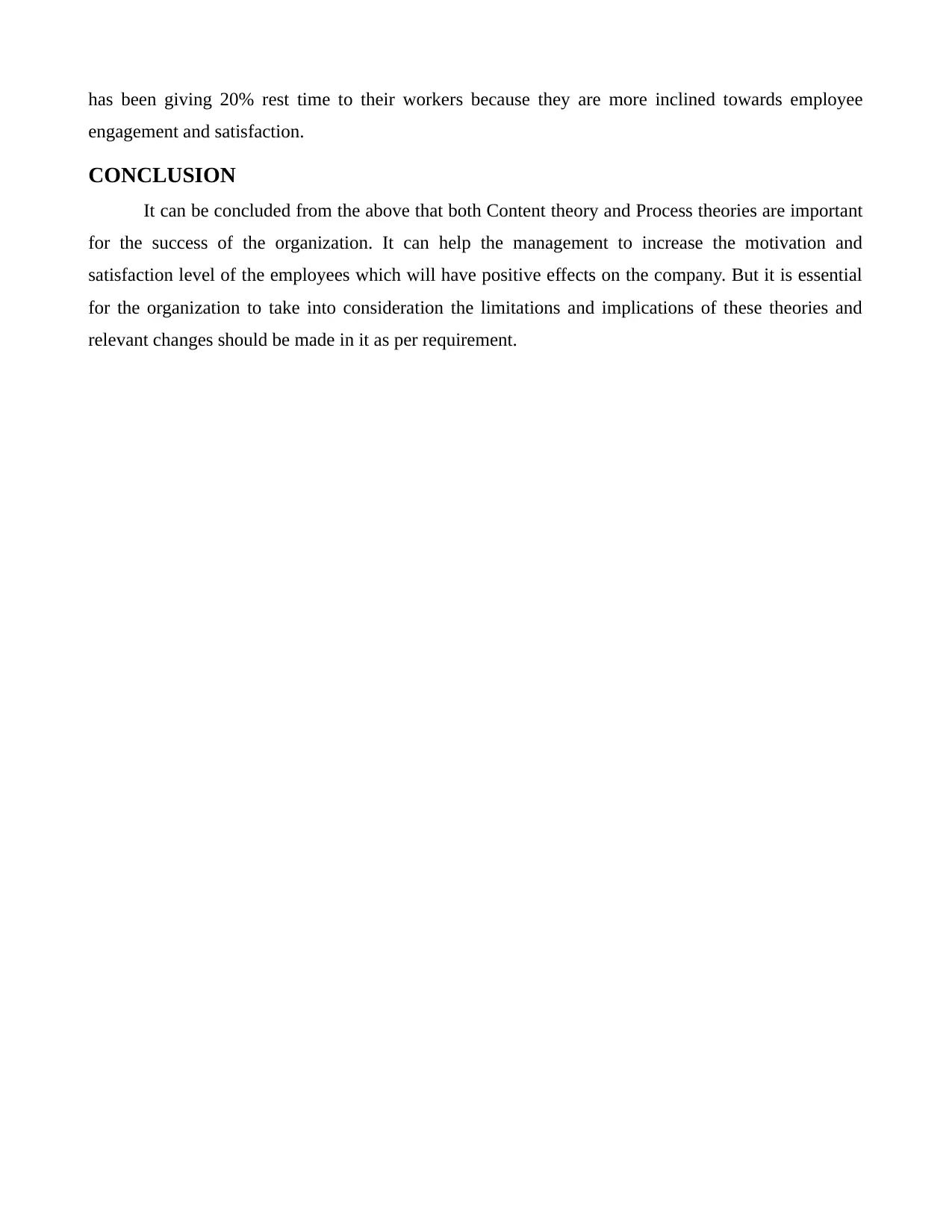
has been giving 20% rest time to their workers because they are more inclined towards employee
engagement and satisfaction.
CONCLUSION
It can be concluded from the above that both Content theory and Process theories are important
for the success of the organization. It can help the management to increase the motivation and
satisfaction level of the employees which will have positive effects on the company. But it is essential
for the organization to take into consideration the limitations and implications of these theories and
relevant changes should be made in it as per requirement.
engagement and satisfaction.
CONCLUSION
It can be concluded from the above that both Content theory and Process theories are important
for the success of the organization. It can help the management to increase the motivation and
satisfaction level of the employees which will have positive effects on the company. But it is essential
for the organization to take into consideration the limitations and implications of these theories and
relevant changes should be made in it as per requirement.
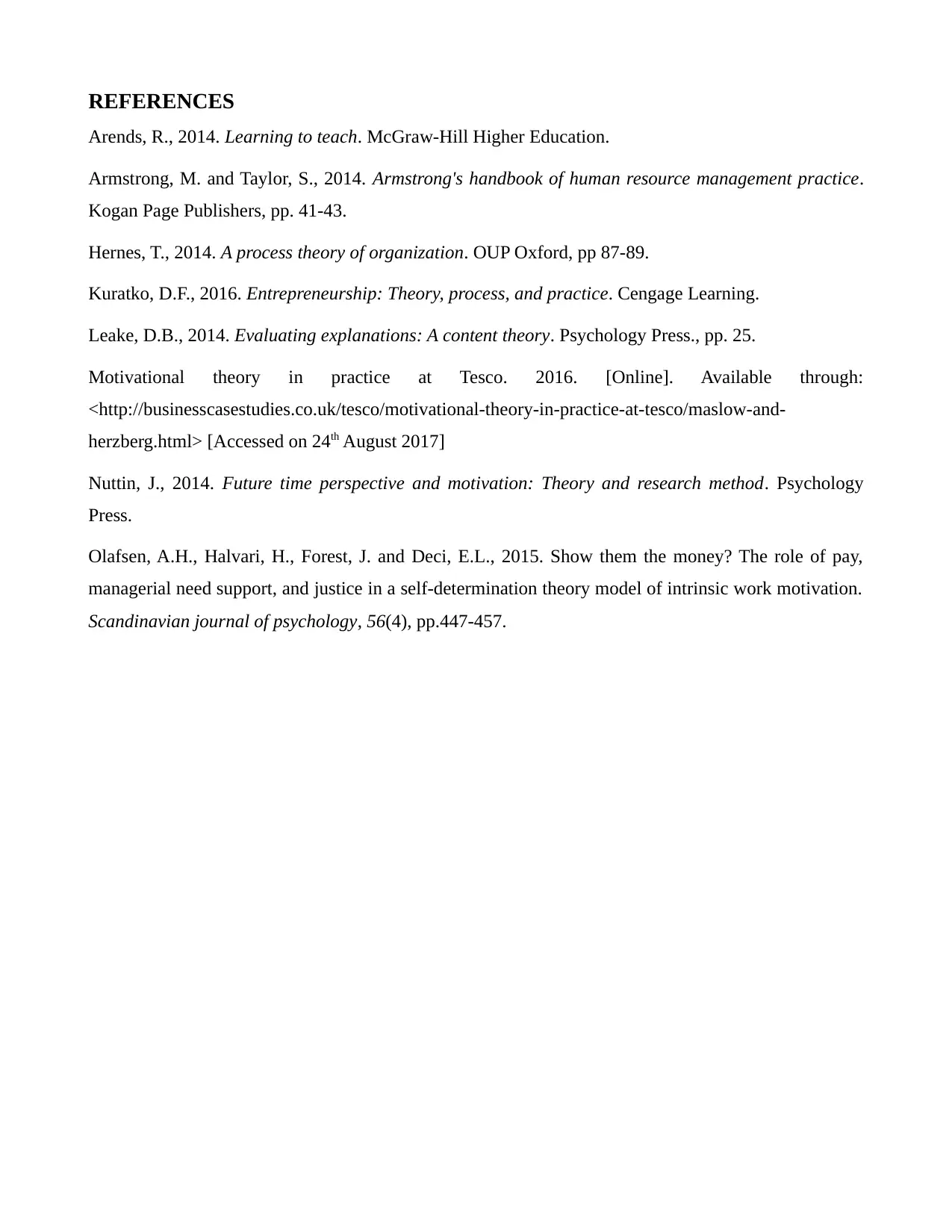
REFERENCES
Arends, R., 2014. Learning to teach. McGraw-Hill Higher Education.
Armstrong, M. and Taylor, S., 2014. Armstrong's handbook of human resource management practice.
Kogan Page Publishers, pp. 41-43.
Hernes, T., 2014. A process theory of organization. OUP Oxford, pp 87-89.
Kuratko, D.F., 2016. Entrepreneurship: Theory, process, and practice. Cengage Learning.
Leake, D.B., 2014. Evaluating explanations: A content theory. Psychology Press., pp. 25.
Motivational theory in practice at Tesco. 2016. [Online]. Available through:
<http://businesscasestudies.co.uk/tesco/motivational-theory-in-practice-at-tesco/maslow-and-
herzberg.html> [Accessed on 24th August 2017]
Nuttin, J., 2014. Future time perspective and motivation: Theory and research method. Psychology
Press.
Olafsen, A.H., Halvari, H., Forest, J. and Deci, E.L., 2015. Show them the money? The role of pay,
managerial need support, and justice in a self‐determination theory model of intrinsic work motivation.
Scandinavian journal of psychology, 56(4), pp.447-457.
Arends, R., 2014. Learning to teach. McGraw-Hill Higher Education.
Armstrong, M. and Taylor, S., 2014. Armstrong's handbook of human resource management practice.
Kogan Page Publishers, pp. 41-43.
Hernes, T., 2014. A process theory of organization. OUP Oxford, pp 87-89.
Kuratko, D.F., 2016. Entrepreneurship: Theory, process, and practice. Cengage Learning.
Leake, D.B., 2014. Evaluating explanations: A content theory. Psychology Press., pp. 25.
Motivational theory in practice at Tesco. 2016. [Online]. Available through:
<http://businesscasestudies.co.uk/tesco/motivational-theory-in-practice-at-tesco/maslow-and-
herzberg.html> [Accessed on 24th August 2017]
Nuttin, J., 2014. Future time perspective and motivation: Theory and research method. Psychology
Press.
Olafsen, A.H., Halvari, H., Forest, J. and Deci, E.L., 2015. Show them the money? The role of pay,
managerial need support, and justice in a self‐determination theory model of intrinsic work motivation.
Scandinavian journal of psychology, 56(4), pp.447-457.
⊘ This is a preview!⊘
Do you want full access?
Subscribe today to unlock all pages.

Trusted by 1+ million students worldwide
1 out of 6
Related Documents
Your All-in-One AI-Powered Toolkit for Academic Success.
+13062052269
info@desklib.com
Available 24*7 on WhatsApp / Email
![[object Object]](/_next/static/media/star-bottom.7253800d.svg)
Unlock your academic potential
Copyright © 2020–2025 A2Z Services. All Rights Reserved. Developed and managed by ZUCOL.





